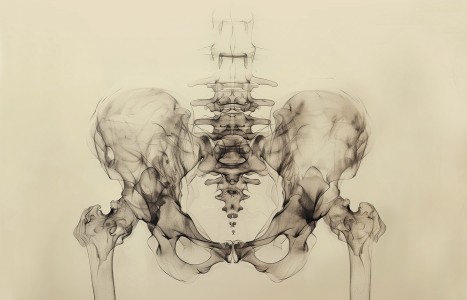People today want convenience, whether it be from their bank, credit card, favorite retail store, or restaurant. They demand it from the companies who hold their loyalty, including their health care providers (you). They don’t want to call and possibly be put on hold, and they want to use an app or schedule an appointment on your website. Here are three reasons your practice can gain by switching to online appointment scheduling.
Understanding the Changes of ICD10
Recently, I have been receiving inquiries about the new codes for ICD10. When do they begin and how much of a change will they be?
There has been a lot of misinformation passing through the acupuncture ranks regarding the ICD10 coding update. The most common misunderstanding of this coding change is that it does not occur until October 2013. Yes, that date is correct; it does not begin for some 20 months. Therefore, for 2012 and the first nine months of 2013, the diagnosis coding system will remain ICD9.
Coding under ICD9 made no changes or updates to the common codes used by acupuncture professionals in 2012, and no further updates will be made in 2013. However, the change to ICD10 will be a wholesale change in codes and will require all health care professionals to implement a new protocol of coding. Consequently, offices should prepare in advance of October, 2013 and be ready to transition to the new code set seamlessly.
The changes should have a positive impact on reimbursement, as they have a greater specificity of coding and get away from the generic coding of ICD9. The current ICD9 system numbers approximately 14,000 distinct diagnoses with the ICD10 expanding to more than 68,000. The number should not be intimidating as the new codes are designed to aid providers in establishing medical necessity by allowing a much greater ability to expand on the specific condition being treated.
Insurance carriers will also be able to have a greater ability to link specific treatments to a diagnosis. For acupuncture specifically, the new codes will combine symptoms with diagnosis which will increase a provider's ability to fully describe the condition as symptoms will be inherent and part of the diagnosis.
This is accomplished by allowing up to seven characters for diagnosis where the ICD9 was limited to five. The ICD10 format will have up to seven characters with character 1 being alpha, character 2, 3 numeric, and 4-7 alpha or numeric. Not all codes will have seven digits and some may have as little as three.
Therefore, just as in ICD9, the correct number of digits must be reported for the code to be accepted. Any missing digits or digits added incorrectly will result in a denial of the claim. For instance, common headache in ICD9 is 784.0, only 4 digits in length. All other headaches including migraines, tension, cluster, traumatic and chronic are all five digits, for example common migraine is 346.00. In ICD10, common headache will be R51 and common migraine G43.0 with most other headache codes also being four digits in length.
Muscle pain or myalgia in ICD9 is 729.1 and is relatively non-specific as it is just muscle pain. In the ICD10 myalgia is M79.6, but also has the code M79.7 which is for fibromyalgia, myositis, fibrositis and myofibrositis. With the latter being more specific the chronic types of muscle pain and symptoms. This simple difference will demonstrate a condition that is more chronic and severe and ultimately require greater levels of care and management.
Lower back pain in ICD9 is 724.2 and also generic and non-specific. With ICD10 there is back pain M54.5, but also M54.4 for low back pain with sciatica (pain down the sciatic nerve or leg) or just sciatica M54.3. Additionally for lower back there is coding differentiation for pain related to disc related conditions, degeneration, and osteoarthritis.
There are also codes in ICD10 that allow further differentiation of acute and chronic pain. R52.0 acute pain, R52.1 chronic intractable pain, R52.2 other chronic pain, and R52.9 generalized pain.
Ultimately the new code set available to acupuncture professionals will increase and allow a greater ability to translate "Traditional Medicine" findings and diagnosis into an acceptable code for billing purposes.
This may seem daunting, but will be no more difficult to understand than the current ICD9 set up. My mission is to aid the acupuncture profession in making this transition and I will in subsequent articles highlight the changes and allow for a smooth transition. There will be available publications specific to the coding under ICD10 for acupuncture as well as access to online sources that I will make you aware of prior to the change. The net effect of making the change to ICD10 is to allow an opportunity for health care providers to code diagnoses more accurately, which will contribute health care quality.
Considering the greater access to acupuncture realized through the acceptance and inclusion of acupuncture under insurance contracts, you will want to be at the forefront to ensure your practice can give those patients the greatest level of access to your service. Using the proper codes will aid your patients in receiving benefits and aid them in accessing your service as they have a portion if not all the services covered under a health plan.
Insurance should be simply seen as nothing more than an aid to enhance the ability of patients to seek your care. Certainly a patient is more likely to complete the required treatment protocol if there is an aid of payment. In that way even patients who use insurance are still cash patients as they will always have some out of pocket portion or co-payment. Therefore in my opinion all practices, even those who accept and bill insurance, are cash practices. What I do know from personal experience is a 100 percent cash patient who is recommended eight visits will in many instances discontinue care at 3-4 because they feel "enough better" where as a patient who is having a portion of care paid by insurance will likely continue the required and best regimen of eight.


